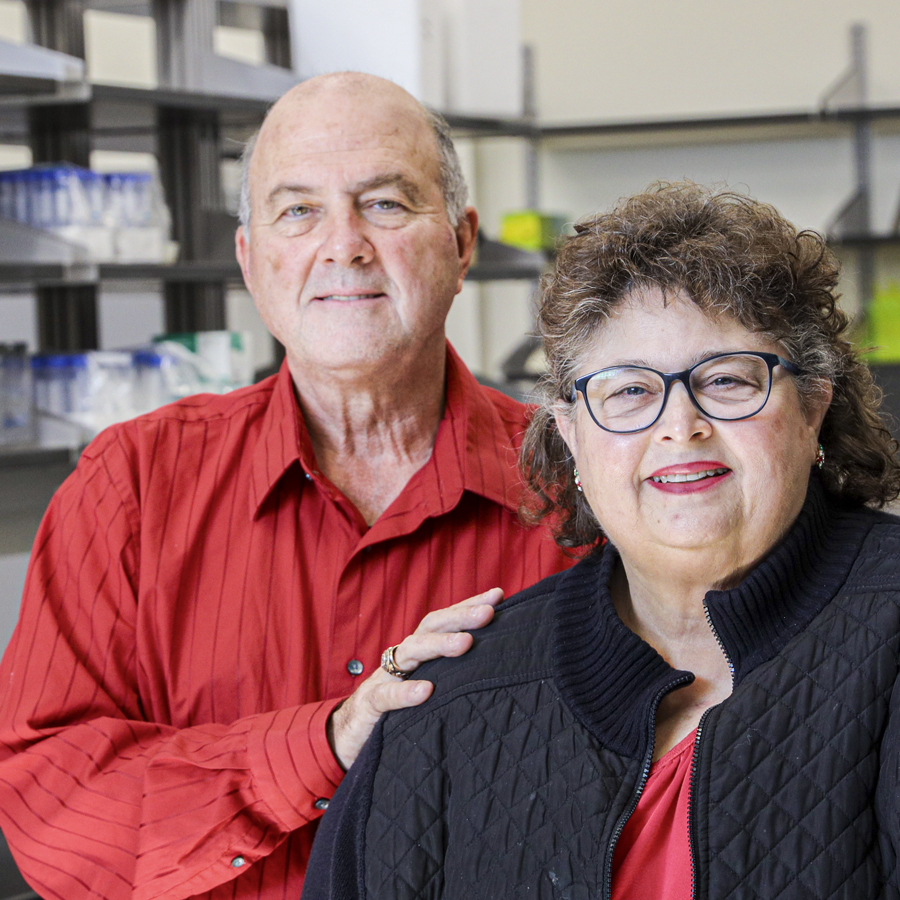Mooney Lab
Those who have been in Baylor’s Marrs McLean Gymnasium may be astonished upon their next visit. Instead of a stark wall bordering a narrow hallway in the northeast corner, sunlight now streams into a state-of-the-art research laboratory. Facing the lab, windows dominate a new student lounge area, affording a view inside.
The recently created Mooney Lab for Exercise, Nutrition and Biochemistry offers faculty and students 4,100 square feet of lab space to conduct research that addresses cancer, kidney disease, heart disease, diet and more.
Mooney Lab came to be thanks to a gift from a family who has found meaningful ways to honor the life of their son on the campus he loved.
Remembering Brendon
Brendon Mooney, B.S.Ed. ’09, was a young man with an enthusiasm for college life. Tragically, Brendon died in a car crash at age 22. Amidst profound grief, Richard, A.B.C. ’20, and Joan, B.S.Ed. ’76, Mooney and their daughter Ashleigh found support in the Baylor Family.
“The University has continued to support us through the years and really made his life significant,” Richard said. “It all made us want to give back, to keep his name alive and provide for students.”
The Mooneys first established the Brendon Chase Mooney Memorial Endowed Scholarship to support students in Health, Human Performance and Recreation (HHPR). When HHPR became a part of the newly formed Robbins College in 2014, the Mooney’s discovered another avenue to support students.
“We could see Robbins College’s multidisciplinary approach coming together to change lives physically, nutritionally, socially and economically,” Joan said. “Evidence-based research is so important, and we see it coming to fruition in this lab.”
Game Changer
Since its formation, Robbins College has grown steadily and engaged in research projects of increasing size and scope. To help facilitate that research, new lab space became a priority in recent years.
“Lack of space was something we needed to address, and the Mooney Lab is a game changer for us,” Robbins College of Health and Human Services Dean Rodney Bowden, Ph.D., said. “It’s the kind of space that will help us attract high-profile faculty and give our researchers a collaborative space in which to work.”
Michael Wiggs, Ph.D., assistant professor in HHPR, joined the Baylor faculty before Mooney Lab was complete. Its promise was an important selling point as Wiggs considered where to take the next step in his career and build further upon his National Institutes of Health (NIH)-funded research program.
“You could see in the promise of the Mooney Lab the University’s commitment to building a research presence,” Wiggs said. “It’s really a commitment to provide an environment and a space to conduct major and basic science research, and it played a prominent role in being able to come here.”
Facilities like Mooney Lab play an important role in Baylor’s Illuminate vision and the University’s goal of Tier 1 research recognition. The lab, which opened in December 2020, features benchtop spaces to support biochemistry work involving human tissue and blood samples, as well as a cell culture lab.
Jeff Forsse, Ph.D. ’18, clinical associate professor in HHPR and director of research labs, uses Mooney Lab to advance his research on renal function and kidney disease.
“I’m looking at what we would call the early or mid-stages of chronic kidney disease,” Forsse said. “Chronic kidney disease affects approximately 10% to 12% of the world’s population. It’s pretty prominent, but most people do not know they have it in the early stages.”
Forsse’s research team studies the impact of earlier detection and whether interventions could prevent kidney disease from progressing or regain kidney functions before they advance to more serious stages.
Wiggs focuses on a malady called cancer cachexia, which is a wasting of the muscles associated with cancer and other diseases. An estimated 20 percent of all cancer deaths are specifically caused by a loss in muscle mass. With the support of a NIH grant, Wiggs studies the role of mitochondria, the organelles that generate energy within human cells, in that decline.
“Three years ago, we published a paper highlighting the effects of mitochondria as having a causative role in muscle wasting,” Wiggs said. “The NIH grant allows us to look at ways in which we can improve mitochondrial health utilizing different drug treatments.”
Two Human Sciences and Design faculty also utilize Mooney Lab. April Stull, Ph.D., associate professor, joined Baylor after three years as director of the didactic program in dietetics in the department of human ecology at the University of Maryland Eastern Shore. Michelle Law, Ph.D., was a research scientist in the pediatrics department at Baylor Scott & White Health in Temple, Texas.
Human Sciences and Design Chair Sheri Dragoo, Ph.D., said she is excited to see Robbins College’s collaborative culture, specifically in regard to Mooney Lab.
“There are so many pieces of research that crossover, and this provides an environment where idea generation will be a bonus of being in a shared space,” Dragoo said.
